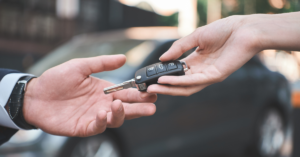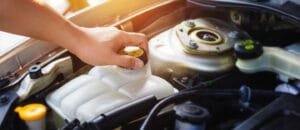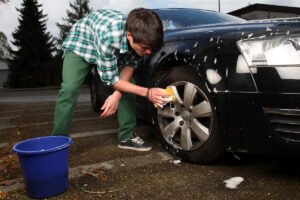Few things are as frustrating as turning the key in your car’s ignition, only to be met with silence—even though the lights, radio, and dashboard are working perfectly. If your car has power but won’t start, it’s a clear sign that something is wrong, but pinpointing the exact issue can feel like solving a mystery.
The good news is that this problem is often caused by a handful of common issues, many of which you can diagnose and even fix yourself with a little know-how.
In this guide, we’ll walk you through the most likely reasons why your car won’t start despite having power. From battery and starter motor problems to fuel system and ignition issues, we’ll cover everything you need to know to get your car back on the road.
Whether you’re a seasoned car enthusiast or a complete beginner, this step-by-step breakdown will help you understand what’s going on and what you can do about it. Let’s get started!
Step 1: Understand the Symptoms
When your car has power but won’t start, it’s important to pay attention to the specific symptoms. These clues can help you narrow down the cause of the problem.
- Lights and Electronics Work: The dashboard lights, headlights, and radio turn on, but the engine doesn’t crank.
- Clicking Noise: You hear a clicking sound when you turn the key, but the engine doesn’t start.
- No Noise at All: The engine doesn’t make any sound when you try to start it.
- Engine Cranks but Doesn’t Start: The engine turns over but doesn’t fire up.
Understanding these symptoms will help you diagnose the issue more effectively.
Step 2: Check the Battery
Even though your car has power, the battery might still be the culprit. Here’s how to check it:
- Inspect the Battery Terminals
Loose or corroded battery terminals can prevent the starter motor from getting enough power. Open the hood and check the connections. If they’re dirty or loose, clean them with a wire brush and tighten them securely. - Test the Battery Voltage
Use a multimeter to check the battery voltage. A healthy battery should read around 12.6 volts when the car is off. If it’s below 12 volts, the battery might be weak or dying. - Jump-Start the Car
If you suspect the battery is the issue, try jump-starting the car. If it starts, the battery likely needs to be charged or replaced.
Step 3: Examine the Starter Motor
The starter motor is responsible for turning the engine over when you turn the key. If it’s faulty, your car won’t start, even if the battery is fine.
- Listen for Clicking Sounds
A single click or rapid clicking when you turn the key often indicates a problem with the starter motor or solenoid. - Check the Starter Connections
Inspect the wiring and connections to the starter motor. Loose or corroded wires can prevent it from working properly. - Tap the Starter Motor
Sometimes, gently tapping the starter motor with a tool can temporarily fix a stuck component. If the car starts after tapping, the starter motor likely needs replacement.
Step 4: Inspect the Ignition Switch
The ignition switch sends power from the battery to the starter motor and other electrical components. If it’s faulty, your car won’t start.
- Check for Power
Turn the key to the “On” position and see if the dashboard lights come on. If they don’t, the ignition switch might be the issue. - Test the Switch
Use a multimeter to check for power at the ignition switch. If there’s no power, the switch may need to be replaced.
Step 5: Investigate the Fuel System
If your car has power but won’t start, the problem might be related to the fuel system. Here’s what to check:
- Check the Fuel Gauge
It might sound obvious, but make sure your car has enough fuel. Running out of gas can prevent the engine from starting. - Listen for the Fuel Pump
When you turn the key to the “On” position, you should hear a faint humming sound from the fuel pump. If you don’t, the pump might be faulty. - Inspect the Fuel Filter
A clogged fuel filter can restrict fuel flow to the engine. If your car has been sitting for a while or you’ve noticed a drop in performance, the fuel filter might need to be replaced.
Step 6: Look at the Spark Plugs
Spark plugs are essential for igniting the fuel-air mixture in the engine. If they’re worn or damaged, your car won’t start.
- Remove and Inspect the Spark Plugs
Use a spark plug socket to remove the plugs and inspect them. Look for signs of wear, such as fouling or corrosion. - Test for Spark
Reconnect the spark plug to the ignition coil and ground it against the engine block. Have someone turn the key while you watch for a spark. If there’s no spark, the ignition system might be faulty.
Step 7: Check the Engine Control Unit (ECU)
The ECU is the brain of your car’s engine. If it’s malfunctioning, your car won’t start.
- Look for Warning Lights
If the check engine light is on, there might be an issue with the ECU or a related sensor. - Scan for Error Codes
Use an OBD-II scanner to check for error codes. These codes can provide clues about what’s wrong with the ECU or other components.
Step 8: When to Call a Professional
If you’ve gone through all these steps and your car still won’t start, it’s time to call a mechanic. Some issues, like internal engine problems or complex electrical faults, require specialized tools and expertise.
Preventative Tips to Avoid Future Issues
- Regular Maintenance
Keep up with your car’s maintenance schedule, including battery checks, fuel system inspections, and spark plug replacements. - Keep Jumper Cables Handy
Always carry jumper cables in your car. They can be a lifesaver if your battery dies. - Monitor Warning Signs
Pay attention to any unusual sounds, lights, or behaviors from your car. Addressing small issues early can prevent bigger problems later.
A car that won’t start but has power can be a frustrating problem, but it’s often caused by a few common issues. By following this guide, you can systematically diagnose and address the problem, whether it’s a faulty battery, starter motor, fuel system, or something else.
Remember, regular maintenance and attention to warning signs can go a long way in preventing these issues in the future. If all else fails, don’t hesitate to seek professional help. With a little patience and effort, you’ll be back on the road in no time. Safe driving!




